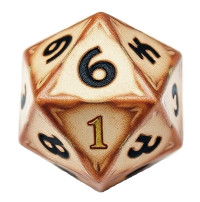I always recognize a Polish saber...and other things not to say at the bar
Hi James,
I came across this video today:
I remembered seeing the curved blade a long time ago in Phoenix Arizona which made me check and sure enough I met the guy many moons ago. Mr. Marsden was training with a couple people at park in central Phoenix a few blocks from where I lived. I talked with him a bit and he was a nice guy who seemed to have not just knowledge but knowledge via application and contemplation. He said he was going through old texts of Western martial arts and kept testing the ideas out. It's pretty neat to see long forgotten martial material be revived to a level of usefulness. I lament not training with him now but I was broke, and … But I digress.
I vaguely remember him telling me about reading some old sword text and the writer said to hold the sword in some particular manner to parry. He said it seemed like it would not work but it did not due to strength but leverage. If I remember correctly he said he caught a much larger opponent in a tournament with the technique 2 or 3 times until the guy realized what was going on and just smashed through the defense with his superior strength.
Strong better than weak say Ogre.
-Banjo
Banjo, I'm going out on a limb here and guessing that Mister Marsden was speaking of the hanging guard, a version of the roof block and a reliable way to avoid decapitation when dueling with long blades. A few years ago I reviewed this video for a friend and recall being pleased with the conduct of the combatants.
Although my journey into reanimating past combat forms—something that many younger boomers began doing simultaneously as a rejection of our domestication—went the cheap rout, with sticks and knives and machetes, these weapons bracket the long blade's characteristics in a lopsided fashion and offer some useful lessons. We found that fighting with oaken and hickory wasters was more dangerous than dull steel and that training in armor and out of armor in complimentary stages helped round out the fighter.
Note in the video that the tall fighter moves as if he has trained mostly unarmored and has inculcated a high level of respect for the weapon, which can manifest as hesitation and lack of dynamic bursts.
Conversely, the shorter fighter behaves as if he has trained mostly in armor, making him, out of armor, both more dangerous and less survivable.
I don't know if these impressions reflect the training history of these men. The point is, what you are looking to develop, is the finesse of the tall man and the dynamism of the stocky man in synergy and that by bouncing back and forth between unarmed and armored contact training this can and has been achieved.
To the point of guarding and denying the aggressor's breach:
-Feint aggressively and launch stop-hits [intercepting strokes] in this way refusing to seed the role of aggressor entirely, even if you are a more cerebral fighter
-Beats, parrys and blocks, no matter how well executed with the weapon hand rarely work against a committed attacker unless accompanied by one or two supporting simultaneous actions:
-Moving off line
-Assisting with the off hand [with a big blade this would have to be a scabbard, stick, shield or jacket]
I regard what these men are involved in as a sacral activity and am glad to view it again.
Thank you.
Being a Bad Man in a Worse World
Fighting Smart: Boxing, Agonistics & Survival
Twerps, Goons and Meatshields: The Basics of Full Contact Stick-Fighting
link › jameslafond.blogspot.com











